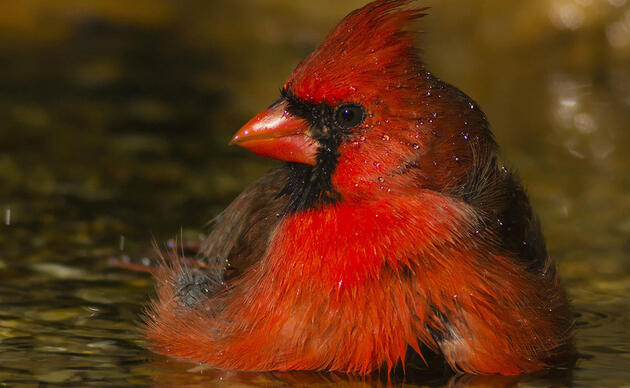Pat and Doris Leary are avid birdwatchers and citizen scientists from Fernandina Beach, FL, who volunteer their time and substantial skills to survey coastal waterbirds in Northeast Florida, coastal Georgia and Florida’s Big Bend. This continues a blog series in which they share their experiences and sightings as well as the challenges these increasingly imperiled birds face.
The critical role of high quality habitat protected within Florida’s coastal parks and preserves was demonstrated recently by two recent, cross-state resightings of the same banded Piping Plover. On March 23, during a routine beach survey at Little Talbot Island State Park in Duval County, I detected a flagged plover in alternate plumage roosting with several other birds. Because none of the regional winter-resident plovers were as advanced in their molt, it had to be a migrant heading back to its northern breeding grounds. Careful study through a spotting scope offered partial views of the gray flag's code, but positive identification was impossible. And then the birds flushed and vanished in the gloomy conditions.
Observing other birds flying south with the wind, I elected to return to the park's south inlet shore. Approaching the area, I found a large concentration of mixed shorebird species including a few piping plovers and the "lost migrant". Perhaps due to the harsh conditions and presence of migrating merlins, all the birds were nervous, rushing about the beach and taking flight repeatedly. As I carefully approached the birds, they flushed yet again with most landing on the opposite side of a shallow beach overwash but I soon detected my quarry running through the milling birds toward the distant inlet shore.
I removed socks and boots and waded through the chilly waters. Fortunately, the mass of birds ultimately settled down and I was able to approach the plovers to once again study the flag code. Some time passed before I was certain of reading the bird’s plastic leg marker correctly: a gray flag on the upper right leg bearing the code “E1”. At one point the migrant rested next to another banded plover carrying a black plastic flag with the code “J5” denoting it as a Maritime Canada plover that spent the winter locally.
Upon returning home, images were processed and a report was submitted to Cherri Gratto-Trevor in far distant
Saskatchewan, Canada. Cherri is a long time plover associate and the current director for piping plover banding efforts across Maritime Canada. As is her practice, Cherri quickly responded and informed me that the migrant was originally banded on May 29, 2014 at Crow Neck Beach in southern Nova Scotia. This bird spent the winter on Three Rooker Island, part of Anclote Key Preserve State Park in Pinellas County. Audubon Florida's Marianne Korosy recorded the plover there on February 6th during Florida's statewide mid-winter shorebird survey and it was last recorded there on March 9th.
A high percentage of migrant and wintering piping plovers are annually recorded in Florida's state park and preserve beaches every season. Two Canadian Maritime plovers wintered in Little Talbot Island State Park and several others were recorded there during fall migration. Likewise, many banded plovers were recorded as migrants and winter residents in the Gulf Coast state parks – on Three Rooker Island and adjoining Anclote Key. Several other maritime plovers wintered in Cayo Costa State Park in southwest Florida. On both Florida coasts, banded plovers from the Great Lakes and Great Plains populations have been recorded frequently in passage or winter on state park beaches.
With so much of Florida's coastlines heavily developed and impacted by burgeoning numbers of residents and tourists alike, our undeveloped coastal parks will only increase in value to Piping Plovers and other shorebirds as time passes. We must be vigilant to increased pressures to expand development and carrying capacities in our parks if we hope to maintain their natural integrity and critical functions for native and migratory wildlife for decades to come.
By Marianne Korosy
Stay in Touch!
Show your love of birds today. Subscribe to receive email updates about Audubon's conservation work and hear about opportunities to help birds in your area or nationwide.




